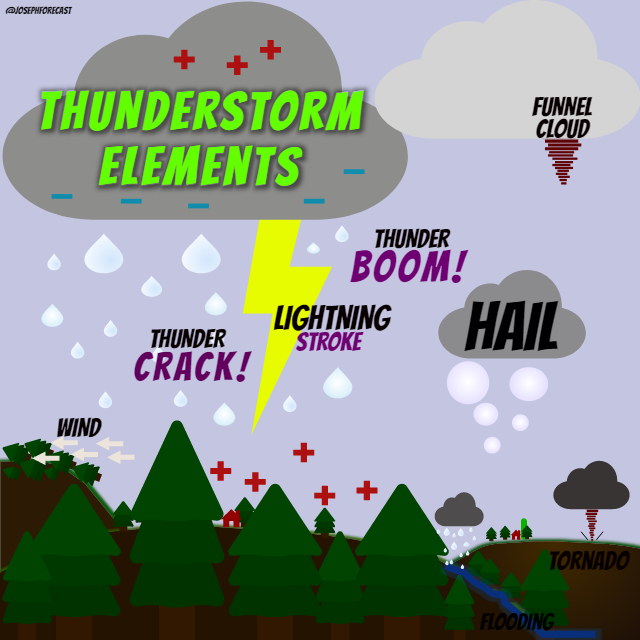Editor’s note: The KOIN 6 Weather team is presenting weather and science lessons to help serve our teachers and students. Click here for more lessons.
PORTLAND, Ore. (KOIN) – The Pacific Northwest is no stranger to clouds and rain, but seldom do we see thunderstorms develop.
The reasons for that are deeper than a sentence, but you can chalk most of it up to the Pacific Ocean and the lack of a large swing in temperature. We can get into the exact details in an expansive weather kids’ lesson of the future. For now, we are going to tackle some of the basic elements that come with thunderstorms.
A QUESTION FROM THE KOIN 6 WEATHER CENTER: DO YOU YOU FIND THUNDERSTORMS EXCITING OR INTIMIDATING?

Thunderstorms sure can be fascinating. A massive billowing cloud can paint the sky with a mind-boggling view. You can say a thunderstorm has a lot of personality, right? They can also be explosive with loud thunder, bright lightning and a howling wind. However, before you know it, the sun is back out and everything becomes quiet again. A lot of people find thunderstorms to be the most exciting part of our earth and become weather enthusiast because of the beauty they bring. No matter how you approach it, it’s important to know the power that comes with a thunderstorm.
We know how strong they can be because we are impacted by the elements that come with thunderstorms every year. Whether it’s a wind storm, drenching rain that causes flooding, or potentially lightning striking a massive Oregon tree.
What is a thunderstorm? A thunderstorm can be classified as a developed rain shower that generates thunder. You’ll learn that thunder comes from lightning, so a thunderstorm taps into more energy. Additionally, a thunderstorm can be one cell, multiple cells, or a supercell.

Lightning: A visible electric discharge from a thunderstorm. Lightning is extremely hot! Lightning can heat the air up to 50,000 degrees Fahrenheit (5 times hotter than the surface of the sun).
Thunder: The audible byproduct of the rapidly expanding gases associated with a channel caused by a lightning bolt.
Wind: Air that is in motion. It can be gentle or very strong. Wind from a thunderstorm can be violent and cause damage.
Hail: Particles of ice that form up in a storm that eventually fall to the surface. They can range in sizes from small to large. Hailstone can cause damage to houses, crops and more.
Funnel Cloud: A rotating column of air that does not make contact with the ground. This is not the same as a tornado because it doesn’t reach the ground.
Tornado: A rotating column of air that makes contact with the ground. Tornadoes can be intense and extremely powerful. There are 5 scales to gauging the strength of a tornado. A weak tornado can be associated with wind between 65-85 mph and the strongest may exceed 200 mph.
Flooding: The overflowing of an area of water. This can be a stream or a river that reaches levels higher than the ground around it. Excessive amounts of rain falling in a location that can’t handle that much water may cause flooding too.
